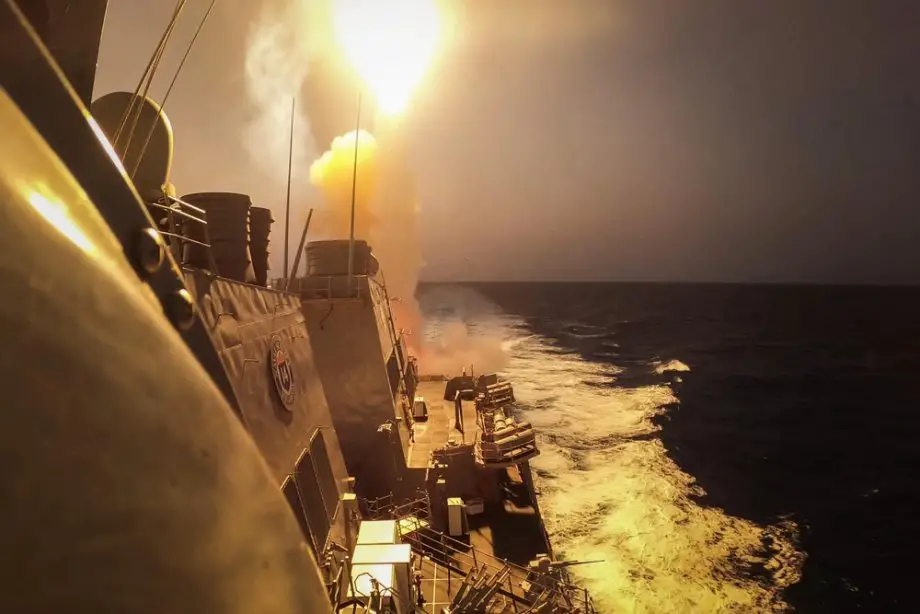Breaking news
What are counter-Unmanned Aerial Systems capabilities of destroyer USS Carney ?.
The Arleigh Burke-class guided-missile destroyer USS Carney has exhibited proficient counter-Unmanned Aerial Vehicle (UAV) capabilities, in the context of increased maritime threats in the Red Sea. These capabilities are a result of a combination of sophisticated weapon systems, advanced radar and sensor technology, tactical proficiency, and electronic warfare capabilities.
Follow Navy Recognition on Google News at this link
 Arleigh Burke class destroyer USS Carney. (Picture source: Dvids)
Arleigh Burke class destroyer USS Carney. (Picture source: Dvids)
Integrated Radar Systems for Detection: The USS Carney is equipped with the AN/SPY-1 radar, a cornerstone of the Aegis Combat System, which is pivotal for the detection of UAVs.
This radar system is a multi-function phased-array radar known for its high resolution and precision. It is capable of tracking small and agile objects, such as UAVs, which are often difficult to detect due to their size, speed, and low-altitude flight capabilities.
The AN/SPY-1 radar's advanced processing allows for the distinction of UAVs amidst various environmental signals and clutter, ensuring early and accurate detection, which is crucial for timely defensive action.
Missile Systems for Engagement and Neutralization: Once a UAV threat is identified, the USS Carney utilizes its array of missile systems for interception. This includes the RIM-66 Standard Missile, designed for medium-range aerial defense, effective against high-altitude threats.
The RIM-162 Evolved Sea Sparrow Missile provides a rapid response to closer, low-altitude UAVs, while the RIM-174 Standard ERAM extends the Carney's engagement range.
These missile systems are integrated with the ship's radar and fire control systems, allowing precise targeting essential for successful UAV interception. However, the use of these sophisticated missiles against typically low-cost UAVs poses a strategic and economic consideration, given the disparity in cost.
Electronic Warfare Capabilities: In addition to kinetic solutions, the USS Carney is outfitted with electronic warfare systems, like the AN/SLQ-32 Electronic Warfare Suite. These systems serve a critical role in the ship's counter-UAV strategy, offering capabilities for electronic detection, jamming, and disruption.
By targeting the electronic and communication systems of UAVs, the Carney can effectively neutralize threats without resorting to kinetic measures, which is particularly valuable in dense maritime environments where collateral damage is a concern or when engaging UAV swarms.
Operational and Training Challenges: The effectiveness of these systems in a real-world counter-UAV operation heavily relies on the proficiency and readiness of the ship's crew.
Operating these complex systems requires specialized training and a deep understanding of various UAV threats and engagement tactics. Regular training exercises and simulations are crucial for maintaining operational readiness and ensuring effective responses to UAV threats.
Interoperability and Coordination: The USS Carney's counter-UAV operations are further enhanced by its ability to coordinate with other naval and aerial assets. This involves advanced communication and data-sharing systems, ensuring that responses to UAV threats are coordinated and effective, particularly in scenarios involving multiple threats or in cooperation with allied naval forces.
The challenges of countering UAVs extend beyond individual ships like the USS Carney to encompass broader tactical and strategic considerations in naval warfare. UAVs present a rapidly evolving threat, with advancements in drone technology constantly altering the landscape of aerial warfare.
This necessitates continuous adaptation and development of countermeasures. The economic implications of deploying high-cost defense systems against low-cost UAVs raise questions about cost-effectiveness and resource allocation in naval defense budgets.


























